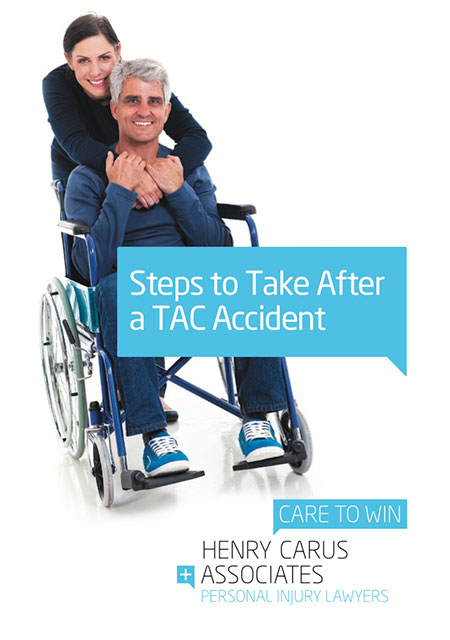
The “No Win No Fee” is an expression that almost all people would have come across in their daily lives. So it is not surprising that most people have a general understanding of the phrase – that is, “if I don’t win my case, I don’t have to pay”. Whilst this rings true, it is important to have a deeper understanding of all aspects of the No Win No Fee lawyer agreement.
What is a “No Win No Fee” arrangement?
The expression “No Win No fee” represents a contingency arrangement between the Lawyer and Client in personal injury matters. The contingency being that if you are not successful i.e. if you do not receive compensation, you will not have to pay for your legal services. No Win No Fee agreements were created to allow a person to engage a Lawyer to act on their behalf in a way that they’re not obliged to pay for legal services until, and only if, their claim is successful. Many times, an injured person is not in any financial position to pay for the legal services they desperately need. They need to right a wrong and get some justice for their injuries.
The No Win No Fee agreement underpins a fundamental concept of our legal system – everyone has the right to legal representation, regardless of what their financial circumstances may be.
What am I paying for?
Generally, in personal injury matters you will be responsible to pay the following:
- Professional costs – representing the time spent working on the file, plus an uplift fee; and
- Disbursements – out of pocket expenses incurred on your behalf e.g. obtaining medical records and doctor’s reports
What is the uplift fee?
The “uplift fee” (or success fee) is a percentage fee applied across personal injury claims if there is a successful outcome i.e. when compensation is paid to the injured person. The uplift is limited to the fees (time) incurred and not the disbursements (out of pocket expenses).
The reason the uplift fee is warranted is because a law firm will only charge legal costs if there is a successful outcome, and the firm a must wait until such a successful outcome for payment of their fees.
It is important to understand that an uplift fee does not represent a percentage of the amount of compensation you receive – it is added on to the professional costs component.
Definitions to know
There are three main concepts worth understanding when it comes to costs:
- 1. Total Solicitor/Client Costs – all the services that a law firm provides to a client and an uplift on those fees, plus all disbursements incurred on behalf of the client.
- 2. Party/Party Costs – all legal services and disbursements incurred of which are reasonable for the litigation between the parties – this is paid by the loser to the winner in litigation.
- 3. Net Solicitor/Client Costs – what the client will pay, after payment is made by the Defendant (the losing party) of some of your total costs.
A commonly misunderstood concept are “Party/Party Costs”. Quite often the injured person will not know that if they’re successful, the losing party will pay some of their total legal costs – hence reducing their bill to their Lawyer.
In successful personal injury claims, the Defendants are responsible to pay a portion of total legal costs to the Lawyer, because they are seen as the “losing party” in the case.
Once your compensation claim has successfully resolved, you will be responsible to pay an amount equal to Net Solicitor/Client Costs. This amount is subtracted from your overall award of compensation.
Example
We recently achieved a fantastic outcome for one of our client’s involved in a transport accident. He sustained serious injuries when he was struck by a car that failed to give way while he was riding his scooter to work. We successfully negotiated his claim with the TAC and he was awarded $485,000.
Our client’s complete file was assessed by external Costs Consultants, and the figures provided were as follows:
- Total Solicitor/Client Costs – $115,000
- Party/Party Costs – $70,000
- Net Solicitor/Client Costs – $45,000
The losing party in this case, the TAC were responsible to pay Party/Party Costs to our office. This left our client with a net legal bill of $45,000, which was subtracted from his $485,000 award of compensation.
As the graph below shows, the TAC, as the losing party, were obliged to pay the blue portion of our client’s total bill – leaving the green portion to be subtracted from our client’s award of compensation.
In our experience with successful transport accident claims, the TAC will pay approximately 60-70% of your total legal costs, meaning your total bill is reduced, leaving you with more compensation in your pocket.
Many clients when they first meet with us, want to know what % (percentage) of their compensation we will charge for our services when we succeed. We tell our clients it is illegal to charge a percentage. We can only charge for the work we have done, and the disbursements incurred. Anyone giving them a percentage quote is just not telling them the true way the costs arrangement works.
We can suggest on average the amount they will pay for our services ranges from say 10% or higher as their Net Solicitor/Client Costs, but as you can see from the example just given, our Net Solicitor/Client Costs, did not even reach the 10% mark.
And in fact, our firm stresses that the key issue our clients should focus on is what are they getting for their legal costs – are they getting services that is expanding the value of their claim? That is where we like to differentiate ourselves – on the outcomes we achieve from the services we deliver.
Summary
Whilst most of us know that under a No Win No Fee arrangement you do not pay unless you win, it is commonly misunderstood or simply not known that the Defendant (or losing party) also has obligations to pay some of your legal costs.
At Henry Carus + Associates we are committed to providing our client’s with a clear understanding of how the No Win No Fee arrangement actually operates in practice.
 Call Us Today
Call Us Today



